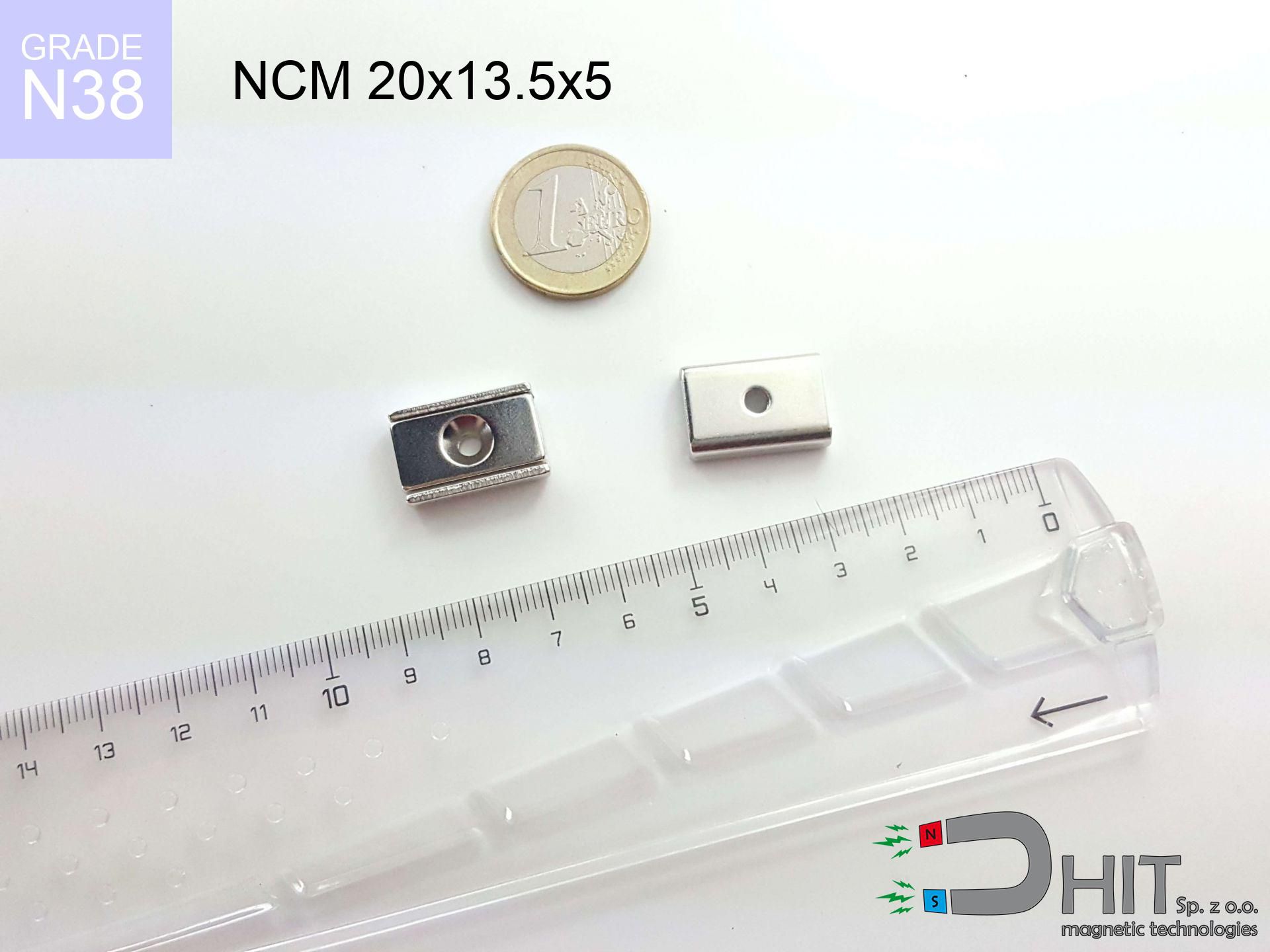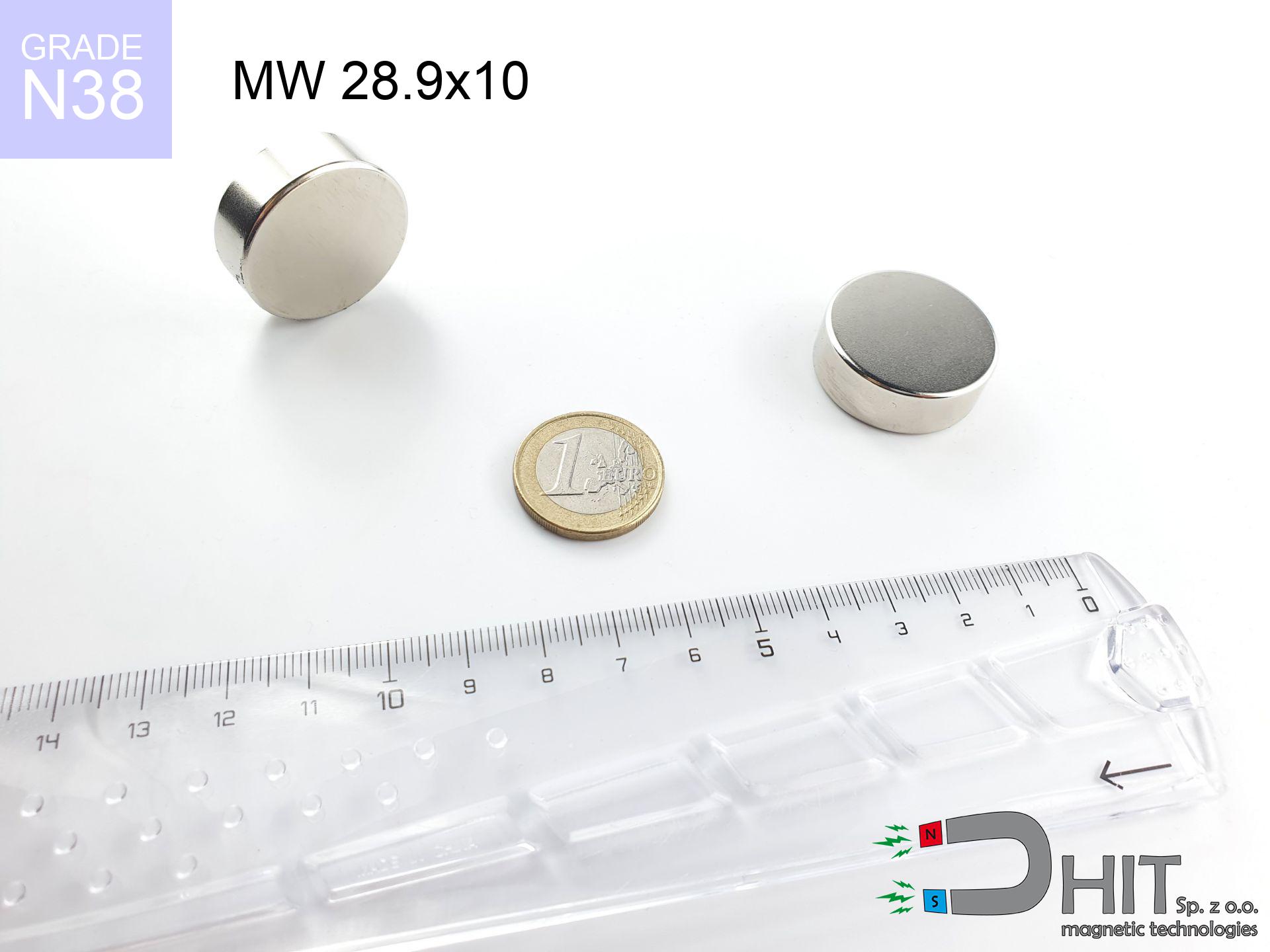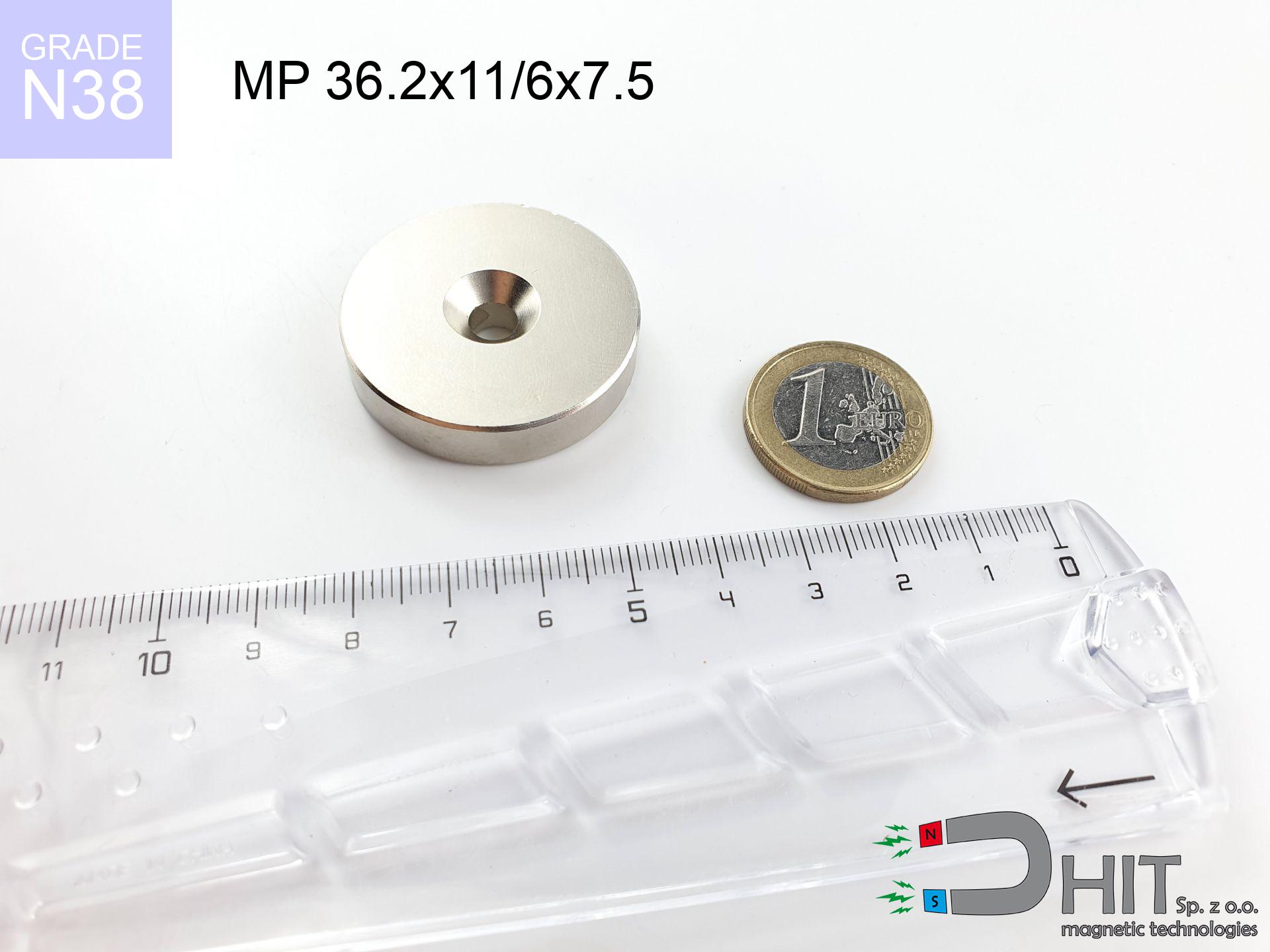NCM 20x13.5x5 / N38 - channel magnetic holder
channel magnetic holder
Catalog no 360487
GTIN/EAN: 5906301814863
Diameter Ø
20 mm [±1 mm]
Height
13.5 mm [±1 mm]
Weight
9.2 g
Magnetization Direction
↑ axial
Load capacity
8.00 kg / 78.45 N
Coating
[NiCuNi] Nickel
7.29 ZŁ with VAT / pcs + price for transport
5.93 ZŁ net + 23% VAT / pcs
bulk discounts:
Need more?
Call us
+48 888 99 98 98
otherwise get in touch through
our online form
our website.
Weight and form of magnetic components can be verified using our
our magnetic calculator.
Same-day shipping for orders placed before 14:00.
Technical details - NCM 20x13.5x5 / N38 - channel magnetic holder
Specification / characteristics - NCM 20x13.5x5 / N38 - channel magnetic holder
| properties | values |
|---|---|
| Cat. no. | 360487 |
| GTIN/EAN | 5906301814863 |
| Production/Distribution | Dhit sp. z o.o. |
| Country of origin | Poland / China / Germany |
| Customs code | 85059029 |
| Diameter Ø | 20 mm [±1 mm] |
| Height | 13.5 mm [±1 mm] |
| Weight | 9.2 g |
| Magnetization Direction | ↑ axial |
| Load capacity ~ ? | 8.00 kg / 78.45 N |
| Coating | [NiCuNi] Nickel |
| Manufacturing Tolerance | ±1 mm |
Magnetic properties of material N38
| properties | values | units |
|---|---|---|
| remenance Br [min. - max.] ? | 12.2-12.6 | kGs |
| remenance Br [min. - max.] ? | 1220-1260 | mT |
| coercivity bHc ? | 10.8-11.5 | kOe |
| coercivity bHc ? | 860-915 | kA/m |
| actual internal force iHc | ≥ 12 | kOe |
| actual internal force iHc | ≥ 955 | kA/m |
| energy density [min. - max.] ? | 36-38 | BH max MGOe |
| energy density [min. - max.] ? | 287-303 | BH max KJ/m |
| max. temperature ? | ≤ 80 | °C |
Physical properties of sintered neodymium magnets Nd2Fe14B at 20°C
| properties | values | units |
|---|---|---|
| Vickers hardness | ≥550 | Hv |
| Density | ≥7.4 | g/cm3 |
| Curie Temperature TC | 312 - 380 | °C |
| Curie Temperature TF | 593 - 716 | °F |
| Specific resistance | 150 | μΩ⋅cm |
| Bending strength | 250 | MPa |
| Compressive strength | 1000~1100 | MPa |
| Thermal expansion parallel (∥) to orientation (M) | (3-4) x 10-6 | °C-1 |
| Thermal expansion perpendicular (⊥) to orientation (M) | -(1-3) x 10-6 | °C-1 |
| Young's modulus | 1.7 x 104 | kg/mm² |
Chemical composition
| iron (Fe) | 64% – 68% |
| neodymium (Nd) | 29% – 32% |
| boron (B) | 1.1% – 1.2% |
| dysprosium (Dy) | 0.5% – 2.0% |
| coating (Ni-Cu-Ni) | < 0.05% |
Environmental data
| recyclability (EoL) | 100% |
| recycled raw materials | ~10% (pre-cons) |
| carbon footprint | low / zredukowany |
| waste code (EWC) | 16 02 16 |
View more proposals
Advantages and disadvantages of neodymium magnets.
Advantages
- They virtually do not lose strength, because even after ten years the decline in efficiency is only ~1% (according to literature),
- They are noted for resistance to demagnetization induced by external disturbances,
- In other words, due to the shiny finish of gold, the element becomes visually attractive,
- They show high magnetic induction at the operating surface, which affects their effectiveness,
- Due to their durability and thermal resistance, neodymium magnets are capable of operate (depending on the form) even at high temperatures reaching 230°C or more...
- Possibility of custom machining and adapting to atypical requirements,
- Wide application in high-tech industry – they are used in magnetic memories, electric drive systems, diagnostic systems, also industrial machines.
- Relatively small size with high pulling force – neodymium magnets offer impressive pulling force in small dimensions, which makes them useful in compact constructions
Limitations
- Susceptibility to cracking is one of their disadvantages. Upon intense impact they can break. We recommend keeping them in a steel housing, which not only protects them against impacts but also increases their durability
- Neodymium magnets lose their force under the influence of heating. As soon as 80°C is exceeded, many of them start losing their power. Therefore, we recommend our special magnets marked [AH], which maintain stability even at temperatures up to 230°C
- Magnets exposed to a humid environment can corrode. Therefore during using outdoors, we recommend using waterproof magnets made of rubber, plastic or other material protecting against moisture
- Due to limitations in realizing threads and complicated forms in magnets, we propose using a housing - magnetic holder.
- Potential hazard resulting from small fragments of magnets pose a threat, when accidentally swallowed, which is particularly important in the context of child health protection. Furthermore, tiny parts of these magnets are able to complicate diagnosis medical in case of swallowing.
- With large orders the cost of neodymium magnets is economically unviable,
Lifting parameters
Maximum holding power of the magnet – what affects it?
- with the use of a yoke made of special test steel, guaranteeing full magnetic saturation
- possessing a thickness of minimum 10 mm to avoid saturation
- characterized by even structure
- with zero gap (without impurities)
- under perpendicular application of breakaway force (90-degree angle)
- at room temperature
Magnet lifting force in use – key factors
- Distance – existence of any layer (rust, dirt, air) acts as an insulator, which lowers capacity rapidly (even by 50% at 0.5 mm).
- Force direction – catalog parameter refers to detachment vertically. When slipping, the magnet exhibits significantly lower power (typically approx. 20-30% of maximum force).
- Element thickness – for full efficiency, the steel must be sufficiently thick. Thin sheet limits the attraction force (the magnet "punches through" it).
- Material type – ideal substrate is high-permeability steel. Hardened steels may attract less.
- Surface structure – the smoother and more polished the surface, the better the adhesion and higher the lifting capacity. Roughness acts like micro-gaps.
- Thermal conditions – neodymium magnets have a negative temperature coefficient. At higher temperatures they are weaker, and at low temperatures gain strength (up to a certain limit).
Lifting capacity was assessed using a polished steel plate of optimal thickness (min. 20 mm), under vertically applied force, in contrast under attempts to slide the magnet the lifting capacity is smaller. Moreover, even a small distance between the magnet and the plate reduces the load capacity.
H&S for magnets
Dust is flammable
Fire hazard: Rare earth powder is highly flammable. Avoid machining magnets without safety gear as this risks ignition.
Cards and drives
Do not bring magnets near a purse, laptop, or screen. The magnetic field can irreversibly ruin these devices and wipe information from cards.
Product not for children
Neodymium magnets are not suitable for play. Eating a few magnets may result in them connecting inside the digestive tract, which constitutes a critical condition and necessitates urgent medical intervention.
Permanent damage
Standard neodymium magnets (grade N) lose magnetization when the temperature goes above 80°C. This process is irreversible.
Protective goggles
Despite the nickel coating, the material is delicate and cannot withstand shocks. Avoid impacts, as the magnet may crumble into hazardous fragments.
Skin irritation risks
It is widely known that nickel (the usual finish) is a strong allergen. If your skin reacts to metals, prevent touching magnets with bare hands or select versions in plastic housing.
GPS and phone interference
Be aware: rare earth magnets produce a field that disrupts precision electronics. Maintain a safe distance from your mobile, tablet, and GPS.
Hand protection
Big blocks can break fingers instantly. Never put your hand between two strong magnets.
Medical interference
For implant holders: Powerful magnets affect medical devices. Keep at least 30 cm distance or request help to work with the magnets.
Handling rules
Before starting, check safety instructions. Sudden snapping can destroy the magnet or hurt your hand. Think ahead.




![UMP 94x28 [3xM10] GW F300 GOLD / N38 - search holder UMP 94x28 [3xM10] GW F300 GOLD / N38 - search holder](https://cdn3.dhit.pl/graphics/products/ump-94x28-m10-gw-f300-vux.jpg)

![SM 32x375 [2xM8] / N52 - magnetic separator SM 32x375 [2xM8] / N52 - magnetic separator](https://cdn3.dhit.pl/graphics/products/sm-32x375-2xm8-mif.jpg)

